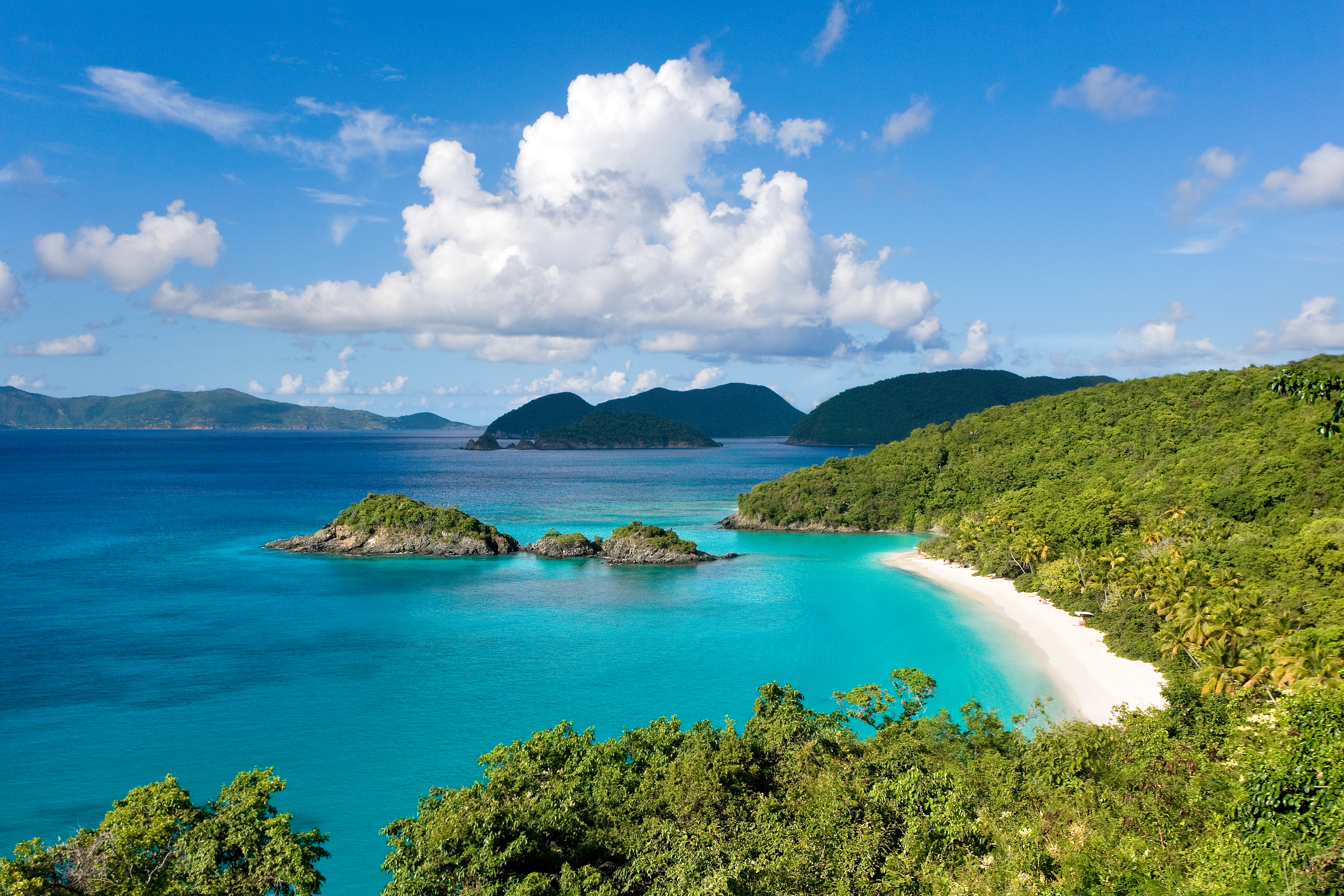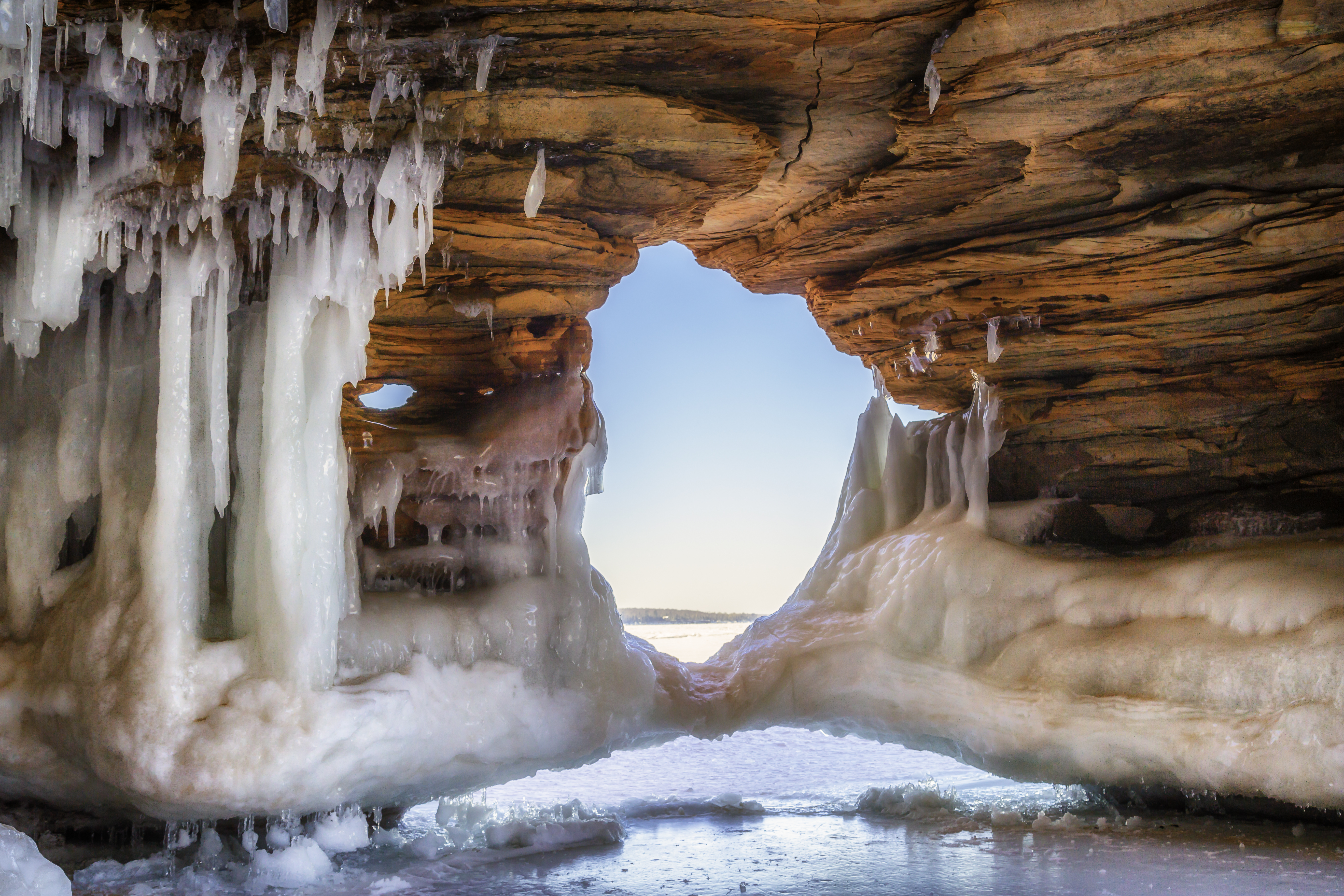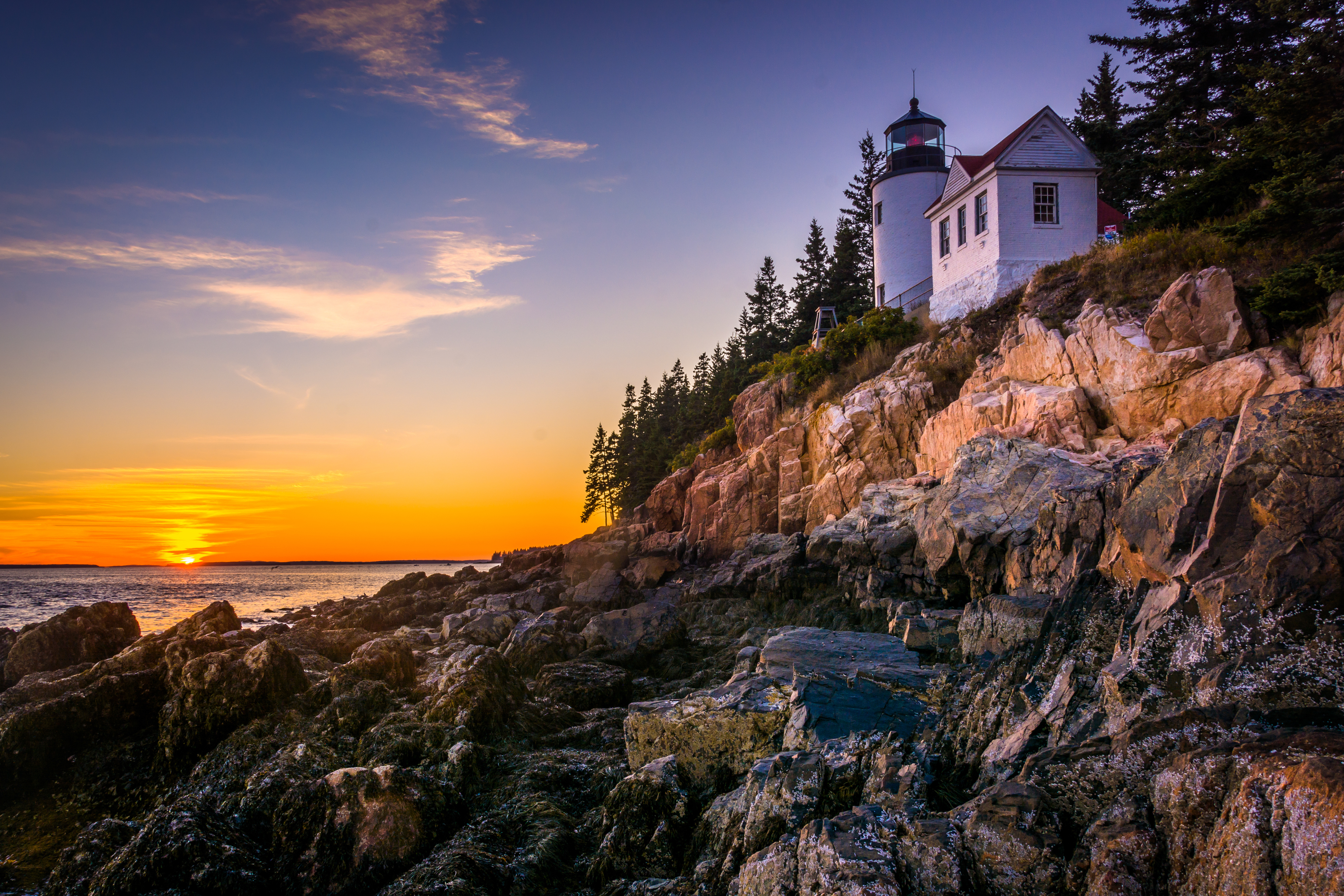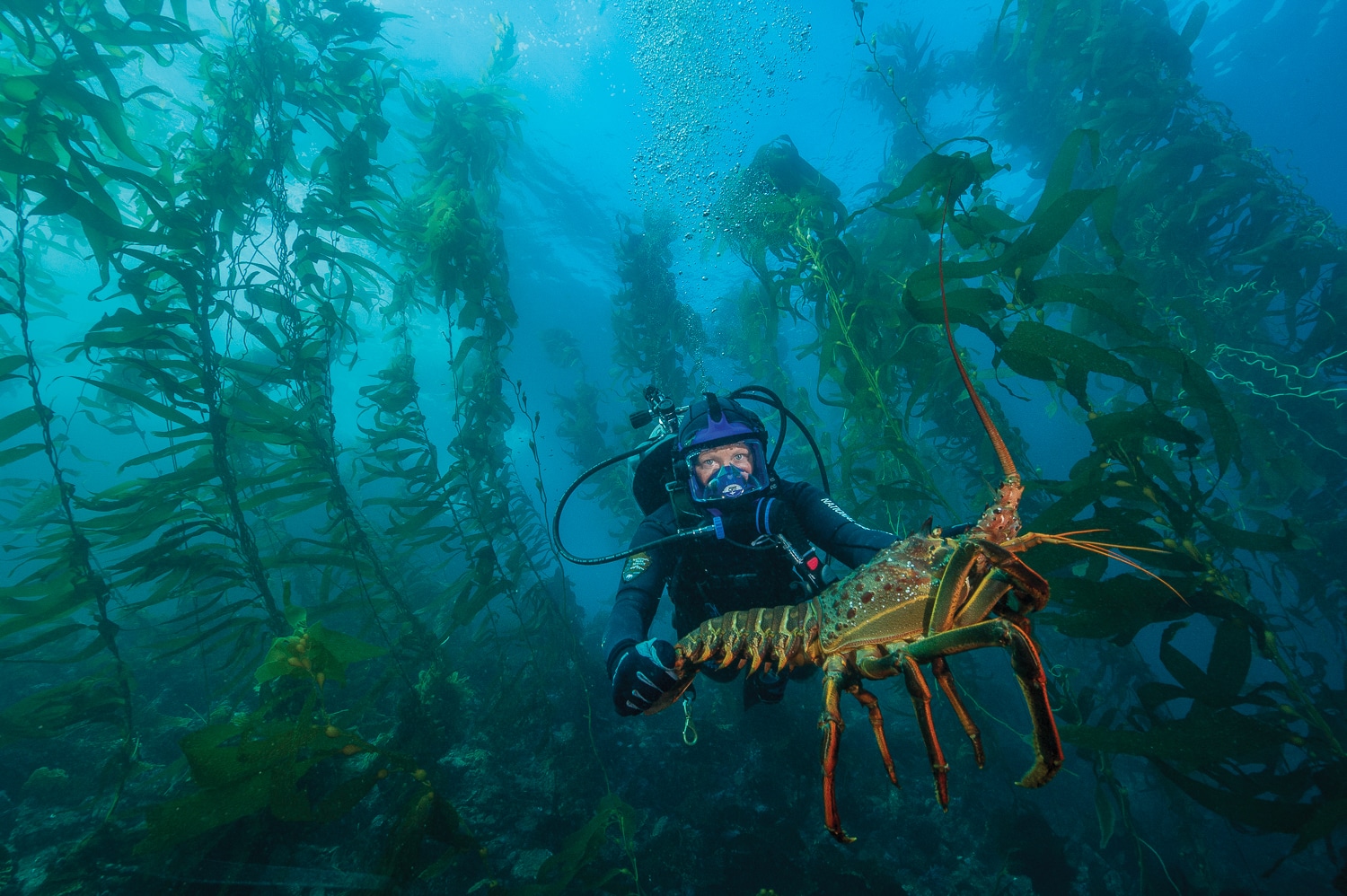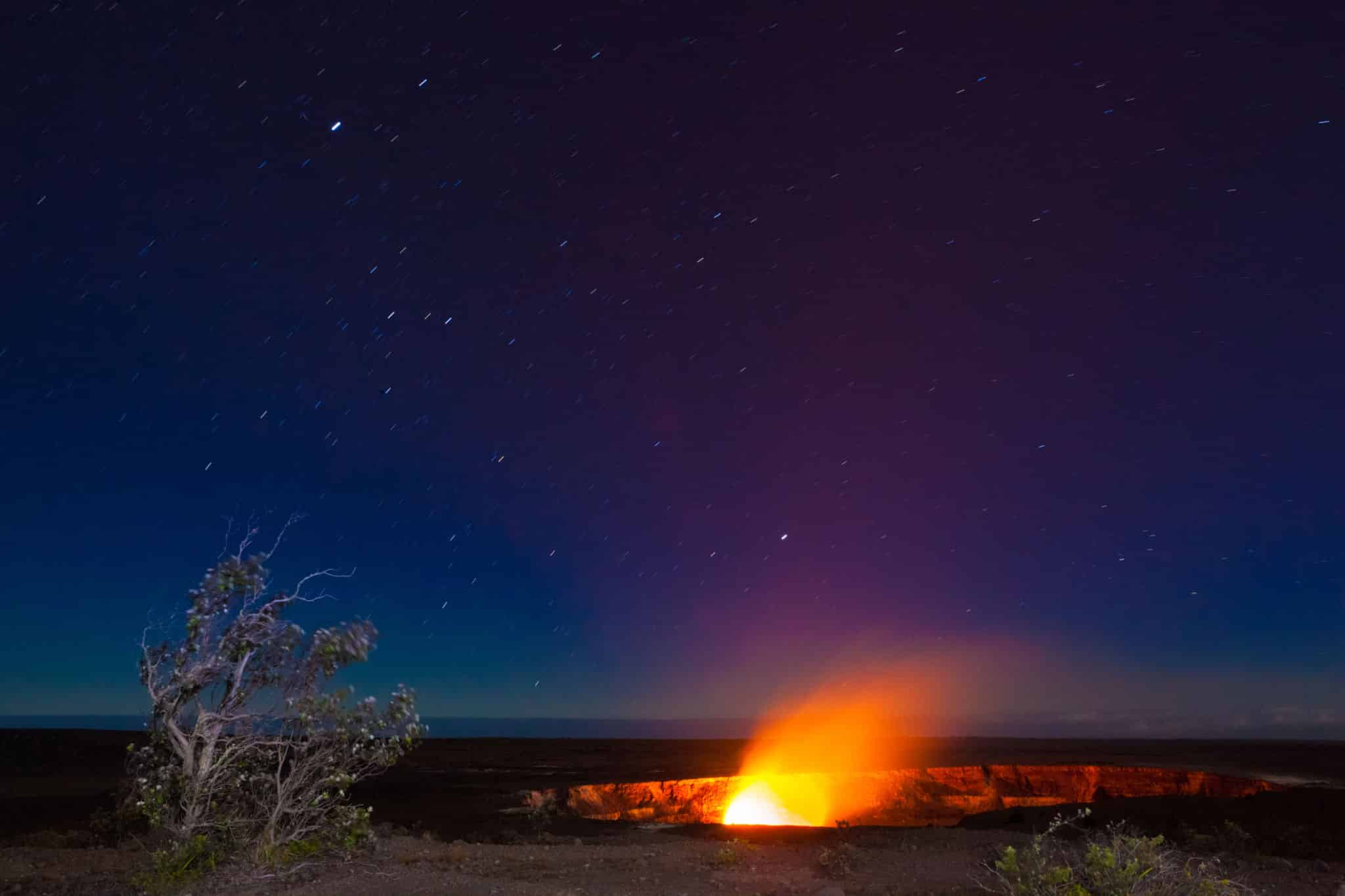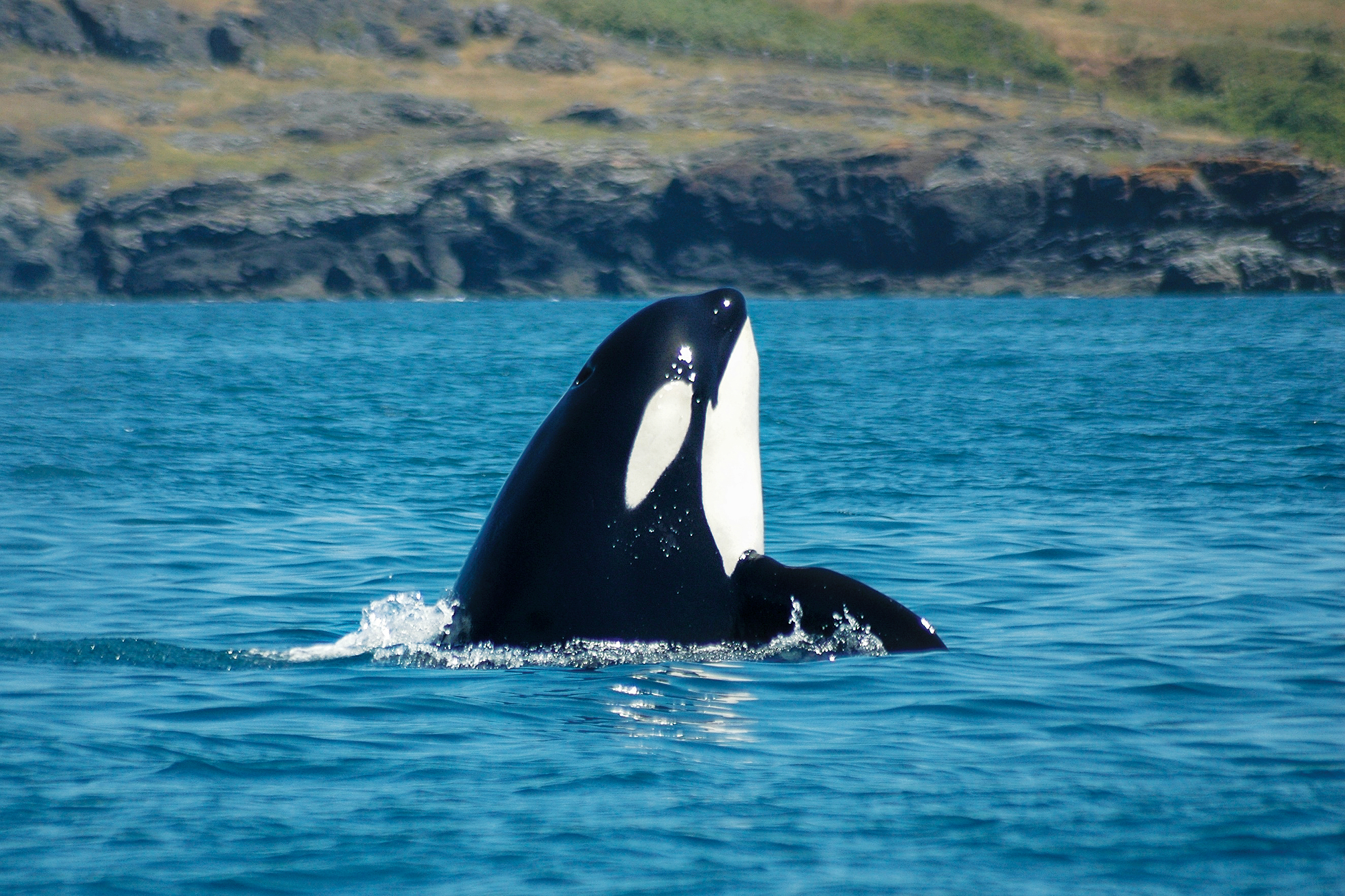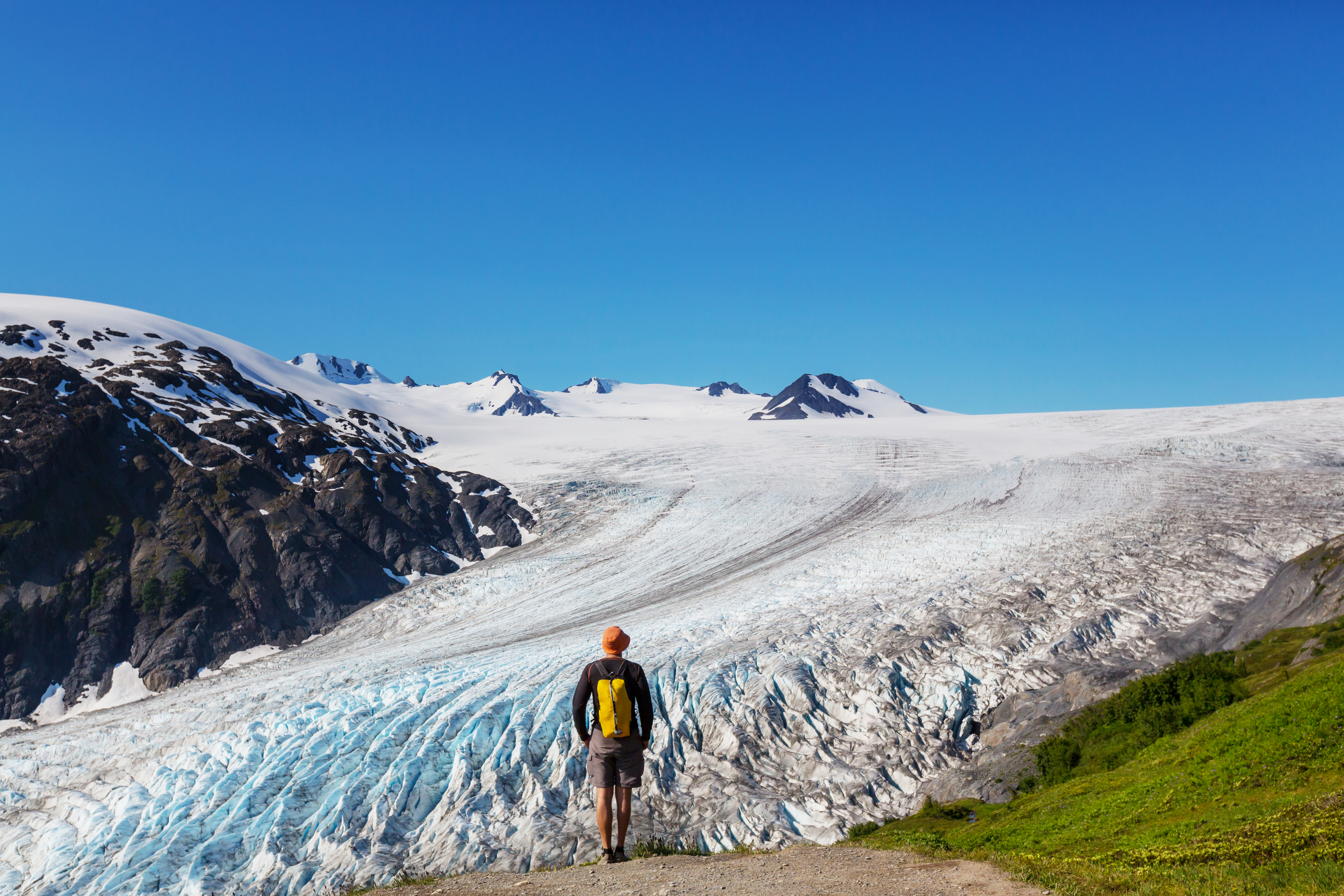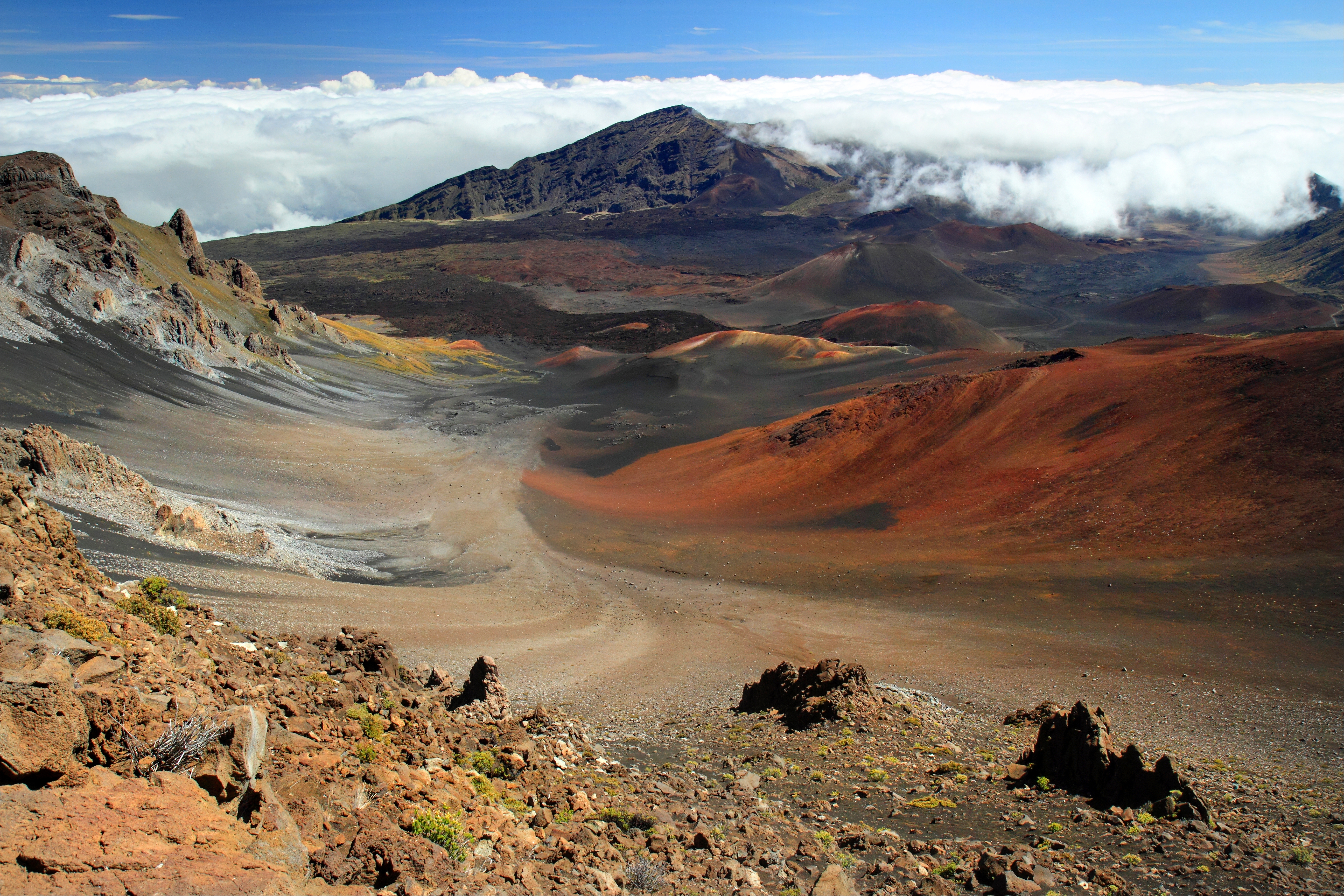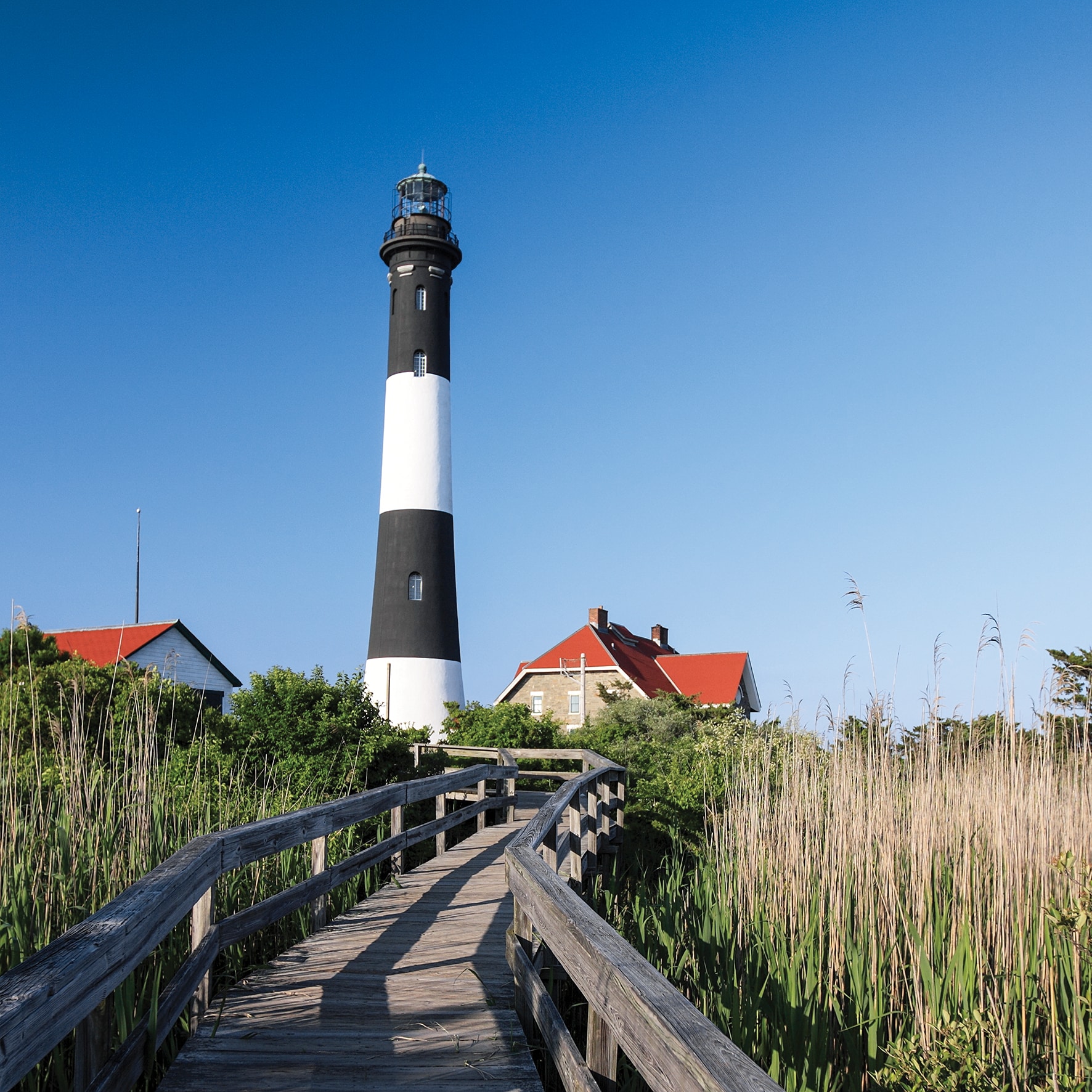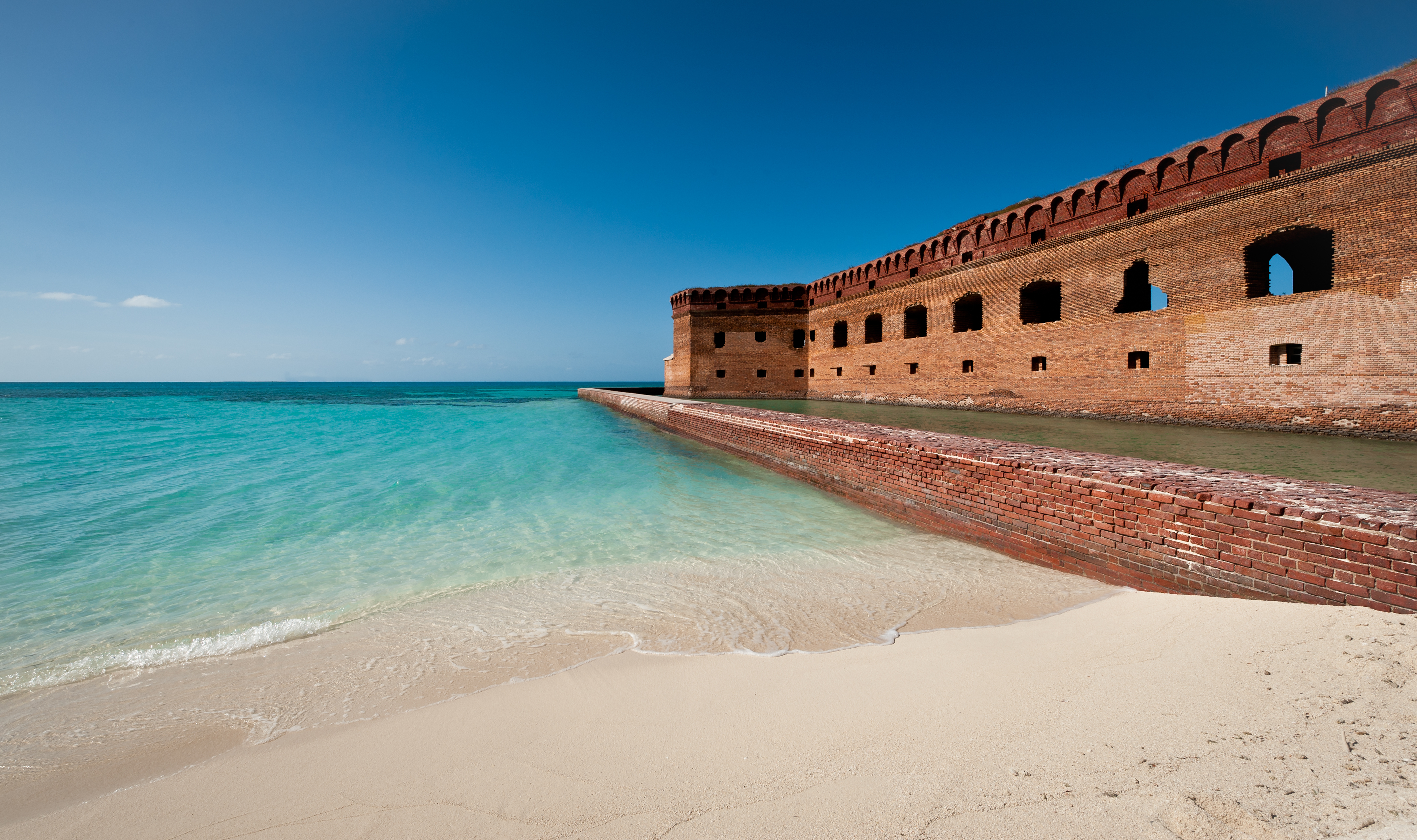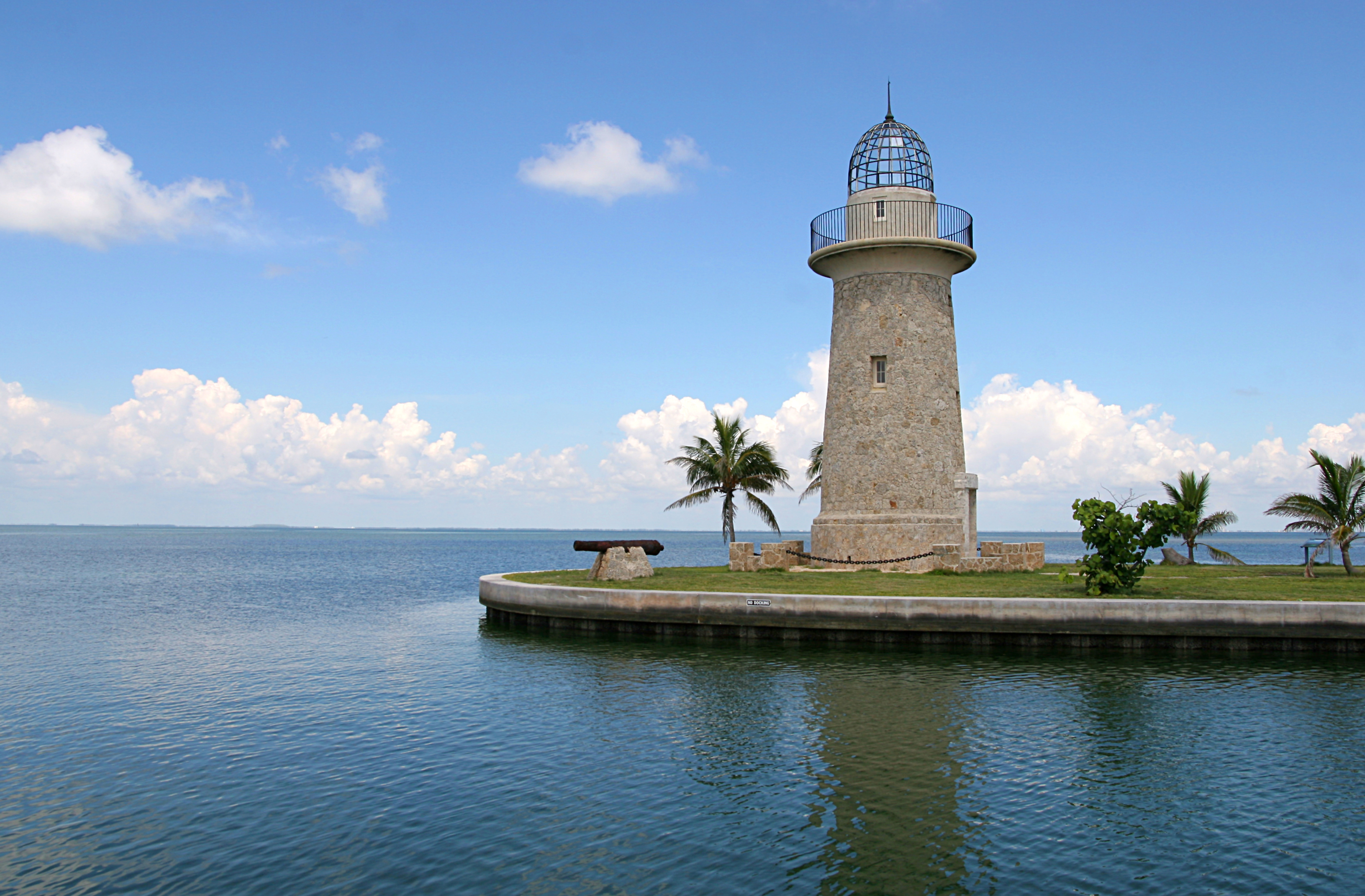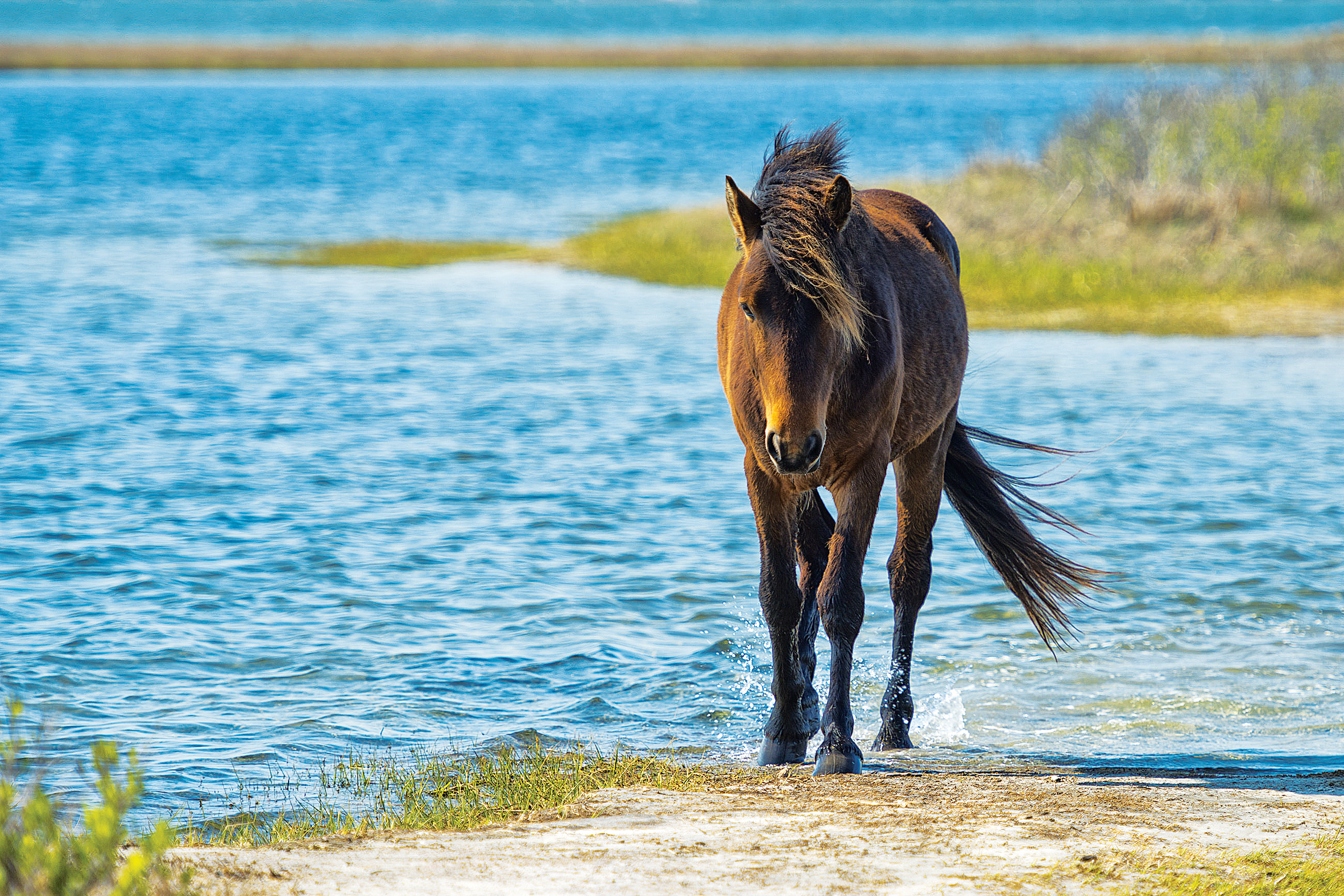Best National Parks On Islands And Beaches
The best times to visit these costal U.S. National Parks
2016 marks the centennial of the United States' National Park Service's creation, an important initiative to preserve some of the country's finest scenery. Many parks are throwing special celebrations, making this the year to visit them. Everyone knows the icons — Yellowstone, Yosemite, the Grand Canyon and Zion — but there are plenty of other parks to discover on our nation's islands and coasts. Here are our picks — and the best seasons to plan your trip.
VIRGIN ISLANDS NATIONAL PARK, USVI
If you've ever been to St. John, you've probably already visited this park — 60 percent of the island is within its boundaries. To get there, take a ferry or car barge from Red Hook on the east end of St. Thomas. More than 20 hiking trails lead to salt ponds, scenic overlooks and postcard-worthy Caribbean beaches. Visit the historic Annaberg Sugar Mill, once one of the largest producers on the island. Beaches in the park are natural and unspoiled: Cinnamon Bay, Hawksnest Bay and Trunk Bay are among the most popular. At the latter, the underwater snorkel trail is a main attraction, appropriate for beginning to advanced swimmers. Plaques along the way give details about the sea creatures and coral formations you'll encounter. Expert-led tours for snorkeling, hiking, birding and shore walks are also available. Best time to visit: Winter
APOSTLE ISLANDS NATIONAL LAKESHORE, WISCONSIN
Composed of 21 islands and 12 miles of shoreline along Lake Superior, this park features sea caves where, over centuries, wind, waves and ice have carved arches and passageways into the sandstone. In summer, the best way to see these formations is by boat. Beginning in June, Apostle Island Cruises offers trips launching daily from the nearby town of Bayfield, or book a guided kayak tour to paddle through the caves along the mainland. "The Wall," located on the southwest side of Stockton Island, is a popular dive site, with submerged sandstone ledges that drop into water 100 feet deep. Observe several shipwrecks from the early 1900s, including Pretoria, a massive vessel submerged by a vicious storm. Good to know: Diving within the park requires a permit, available for free at park headquarters. Best time to visit: Summer
ACADIA NATIONAL PARK, MAINE
Acadia will officially turn 100 this year on July 8. Located on Mount Desert Island, this park embodies New England charm — the rocky Maine coastline, carriage roads, an iconic lighthouse — making it perfect for autumn leaf-peeping. The foliage starts to shift in September, but mid- October is the peak season for yellow, orange and red hues. Drive the scenic 27-mile Park Loop Road, which winds around the island's shoreline, lakes, forests and mountains, including Cadillac Mountain, the tallest peak on the East Coast. You'll find 120 miles of hiking trails weaved throughout the terrain; 50 miles of carriage roads, financed by John D. Rockefeller Jr. in the early 1900s, are excellent for biking and horseback riding. Best time to visit: Fall
CHANNEL ISLANDS NATIONAL PARK, CALIFORNIA
One park, five islands. Dubbed the "North American Galapagos" thanks to its unique wildlife, this chain off Southern California's coast is only accessible by boat or plane. To get there, ferry transportation departs from harbors in both Ventura and Oxnard, or take a charter flight from Camarillo. In the fall months, water temperatures can reach 70 degrees and visibility increases, making it the best time for swimming, snorkeling and diving. The height of summer whale-watching season has passed, but you still have a chance to spot humpbacks through October. The closest island to the mainland, Anacapa, boasts cliffs, caves and natural bridges, like the iconic 40-foot Arch Rock. Hike to Inspiration Point to get a bird's-eye view. On Santa Cruz, start at Scorpion Beach to visit the historic ranch dating to the 1800s, then hike to Cavern Point to overlook the coast. End your journey snorkeling at Scorpion Anchorage. The islands of Santa Rosa, San Miguel and Santa Barbara can be a little trickier to visit due to weather conditions and limited transportation schedules. Best time to visit: Fall
Travel Tip: Parks offer free admission on national holidays, but most are closed on Thanksgiving, Christmas and New Year's Day.
HAWAII VOLCANOES NATIONAL PARK, HAWAII ISLAND
As the name suggests, the park has two active volcanoes, Mauna Loa and Kilauea — the latter is one of the Earth's most active — and the dramatic landscape has both UNESCO World Heritage and World Biosphere status. They are easily accessible by car (four-wheel drive not required) on two main roads, Crater Rim Drive and Chain of Craters Road, which lead to steam vents, sulphur banks and lava tubes. Or hike trails that wind through volcanic craters, deserts and rainforests. A sacred place for Hawaiians, this park will also celebrate its own 100th birthday on August 1. Plan your visit to coincide with the festivities and you could see locals in traditional attire bringing offerings to Pele, the goddess of fire. Best time to visit: Summer
SAN JUAN ISLAND NATIONAL HISTORICAL PARK, WASHINGTON
Visit this park and you're likely to hear about a territorial dispute between the United States and Great Britain dubbed "The Pig War." A peace treaty led to a joint occupation of the island for 12 years; today, the two camps make up this history-filled park. At American Camp on the south end, find the longest stretch of sand, South Beach, plus a plethora of hiking paths through forests and along the coast. Starting in April, these bluff trails are the best places to spot orcas, seals and otters. Located at the north end on Garrison Bay, English Camp also includes trails, plus a few historic sites like a formal garden and a cemetery. Best time to visit: Spring
KENAI FJORDS NATIONAL PARK, ALASKA
The town of Seward is your gateway to this rugged, ice-capped wilderness. The park's only accessible road (open late May to early October) starts here and leads to Exit Glacier, where you can easily hike or take a ranger-led walk to get closer views of the glacier. More experienced hikers can tackle the Harding Icefield Trail, a steep, 8-mile round-trip route that passes through meadows, forests and above the tree line for a panorama of the otherworldly ice field. Daily boat tours embark from Seward's harbor to see the park's tidewater glaciers, plus area marine life including sea lions, otters, orcas and humpback whales. Best time to visit: Summer
HALEAKALA NATIONAL PARK, MAUI
If there were one moment worth a 2 a.m. wake-up call, standing above the clouds on Maui's highest peak to watch the sunrise would be it. The volcano is a year-round attraction, but plan a trip in April or May for fewer crowds. Many tour companies lead the excursion (some even include a bike-riding descent) and most offer round-trip hotel transfers. Pack some snacks (no food is sold in the park) and stay to hike the summit area's 30 miles of trails. Not an early bird? Sunsets are equally spectacular, followed by a dazzling night sky, sans light pollution. Best time to visit: Spring
Travel tip: Verify current weather conditions at the park's visitors center before hiking or camping.
FIRE ISLAND NATIONAL SEASHORE, NEW YORK
Located off the southern shore of Long Island, this barrier island is a nearby respite from New York City life. Most visitors hit the beach in summer, but after Labor Day, the weather cools, the crowds die down and mosquitoes take a hiatus. Ferry service still operates daily, or park at Robert Moses State Park to access the westernmost end of the 26-mile-long national seashore. Fishing season is also in full swing: surf-casting from the shore is popular, with bass and bluefish among the top catches. For a different vibe, stroll the boardwalk through the Sunken Forest in Sailors Haven to admire the rare ecosystem of centuries-old trees shaped by constant ocean spray. Best time to visit: Fall
DRY TORTUGAS NATIONAL PARK, FLORIDA
Less than 1 percent of this park's 100 square miles is on dry land, so be ready to dive in to see the abundant marine life and colorful coral. Travel by boat or seaplane 70 miles west of Key West to this remote spot, made up of seven small islands and the surrounding Gulf. Winter here means less rain, mild temps and lower humidity — making this the best national park for kayaking, fishing, hiking and sunbathing. Ample snorkeling and diving sites are suitable for all levels, and they include protected reefs, shipwrecks and a moat wall. Grab a laminated underwater map for guidance and keep an eye out for the park's namesake turtles, like loggerheads, leatherbacks and hawksbills. Don't miss a tour of the historic Fort Jefferson on Garden Key, which was used as a prison during the Civil War. Best time to visit: Winter
BISCAYNE NATIONAL PARK, FLORIDA
Close to the bustle of downtown Miami, much of this park lies peacefully underwater. By boat is the best way to navigate the 172,000 acres; four nearby marinas provide ramp access. From November through April, take a guided excursion via canoe, kayak or private charter. A few small keys dot the park, and the most popular, Boca Chita, has picnic tables, grills and restrooms, plus an ornamental lighthouse that dates to the 1930s. Climb its observation deck to take in the view of the surrounding ocean and city skyline. Sail to the sites along the Maritime Heritage Trail, where six shipwrecks and a lighthouse marked by buoys are prime spots for snorkeling and diving. Also worth a boating trip: the shacks of Stiltsville in Biscayne Bay have a storied Prohibition-era past, with tales of illegal gambling and alcohol. Most of the original structures have been demolished by hurricanes over the years, but the seven remaining houses can be admired from the water — a permit is required for public access to the houses themselves. Best time to visit: Winter
ASSATEAGUE ISLAND NATIONAL SEASHORE, MARYLAND AND VIRGINIA
This barrier island along the coasts of Maryland and Virginia boasts 37 miles of immaculate beaches, salt marshes and maritime forests, but the celebrities here are the wild horses and ponies. Most visitors come in July to watch the annual pony swim, where a volunteer group — nick- named the "Saltwater Cowboys" — herds horses across the channel to nearby Chincoteague Island. During the event, crowds can top 40,000, and the weather is hot and humid. A visit in April or May still offers the chance to view ponies, but with fewer people and cooler temps. Keep in mind that feeding or petting the wild animals is harmful to both horses and humans. The best way to see them from a safe distance is on a wildlife cruise or a kayak tour. Best time to visit: Spring
